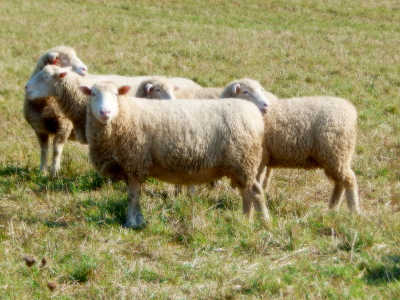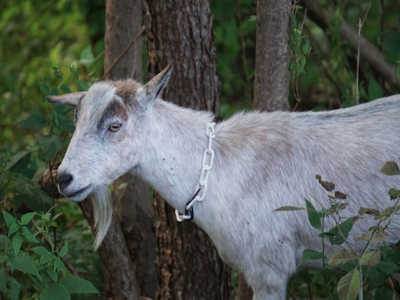In Pennsylvania, producers are required to identify their sheep and goats with an official scrapie identification method before moving them off their farms. That’s important now that lambing and kidding season is in full swing, according to a Penn State Extension educator.
“This includes animals transported within the state as well as those transported across state lines,” said Melanie Barkley, livestock extension educator based in Bedford County. “The Pennsylvania law regarding scrapie identification is more stringent than the U.S. Department of Agriculture national requirement that sheep 18 months and older must have a scrapie ID if they leave the farm of origin.”
For most producers, this means animals will have a scrapie tag in their ear, Barkley added. If sheep or goats don’t have one and they are transported across state lines, producers could be fined by the USDA.
Scrapie is a fatal disease affecting the central nervous systems of sheep and goats, characterized by a lack of coordination, nervousness, aggressiveness and intense rubbing. It is thought to be caused by a virus-like agent known as a prion. This animal-identification program enables officials to trace suspected and confirmed cases of scrapie back to the farm of origin.

As of Jan. 1, 2009, all sheep and goats raised in Pennsylvania must be identified with official scrapie ID if they leave the farm property or properties where they are housed. There are several forms of official scrapie ID available to producers. New producers can obtain up to 80 free, plastic flock ID tags through 2020 or until available funds for the tags have been spent.
New producers in Pennsylvania can obtain tags or a premises ID by calling 717-836-3235 or emailing asteck@pa.gov. Each farm is assigned its own individual premises ID. Established producers can purchase ear tags from sources that have been approved by USDA. A list of these suppliers with their contact information can be found at this website.
Two other forms of official ID are a readable registration tattoo that matches the registration certificate and a USDA-registered scrapie tattoo that is readable.
Producers who send animals to livestock markets without tags can have the market tag the animal with a blue, slaughter-only tag or an orange tag, as long as the owner is willing to sign a statement that animals came from his or her farm.
Producers who market animals without official identification can expect their contact information to be reported to the Pennsylvania Department of Agriculture. Follow up from the department will remind producers to tag animals. Repeatedly sending animals to market without official identification could lead to expensive fines, Barkley warned.
“This identification plan is important because it is part of the National Scrapie Eradication Program that was started in 2000,” she said. “It seeks to eradicate scrapie in the United States to meet the World Organization for Animal Health criteria. The program has reduced the prevalence of scrapie by more than 99%, but a limited number of cases are confirmed each year through a surveillance program.”

In March 2019, USDA updated its scrapie surveillance plan. USDA routinely takes samples from animals to monitor the level of scrapie incidence in the country. The new order now includes routine testing for goats as well as sheep. The number of samples taken by each state is based on the National Agricultural Statistics Service data for the population of mature sheep and goats in a state. In 2018, a goat sold through a Pennsylvania market tested positive for scrapie.
It takes a long time for scrapie symptoms to show up, Barkley noted. They may not appear until two to five years after infection.
“Scrapie causes major behavioral changes, such as tremors, lack of coordination and occasionally convulsions,” she said. “Classic signs of scrapie include intense rubbing against objects to relieve itching. Constant scratching breaks off fleece fibers and may even cause raw areas on the hide. Diagnosis is confirmed through microscopic examination of brain tissue.”
Scrapie can be transmitted between sheep and goats in a flock or herd. One of the most common modes of transmission appears to be through the placenta and placental fluids. Another method of transmission is through infected feed. That is one reason why, in 2003, the U.S. banned the feeding of all ruminant-derived meat, bone meal and blood meal to ruminant animals.
Once a flock or herd becomes infected, it is difficult to eradicate scrapie, Barkley said. Infected flocks and herds can experience significant production losses. One of the most devastating losses comes from the depopulation of susceptible animals. The presence of scrapie in the U.S. has also affected sheep and goat export markets.
In addition, producers are required to keep records for five years after animals are sold, she said. These records should include the animal's ID, breed, sex, birth date, date the animal was sold, and the name and address of the buyer.
“All sheep and goat producers working together to identify animals is critical to reach the goal of a scrapie-free status for the United States,” Barkley said. “This will open export options and could increase the demand for American-produced lamb and goat meat.”
Source : psu.edu